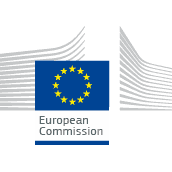
Development of a reliable methodology for better risk management of engineered biomaterials in Advanced Therapy Medicinal Products and/or Medical Devices
Date de clôture : 4 mai 2017
APPEL À PROJET CLÔTURÉ
APPEL À PROJET CLÔTURÉ
Environnement
Coopération internationale
Biotechnologie
Produits chimiques
IT
ESPON
Horizon Europe
INTERREG
Recherche
Topic Description
Specific Challenge:The development of new biotechnology-based products needs to be complemented with a scientifically valid identification of the potential hazards from these biomaterials to human health and to the environment, together with the monitoring and reduction of the risk that these new technologies pose. Current knowledge is still incomplete and the established methods may be inappropriate for specific materials in view of their eventual deployment. The necessary integration of physical, chemical, biochemical and clinical methods is an open challenge. Hence, future production system engineering requires development of integrated and validated methodologies as basis for an appropriate integrated risk management.
Scope:The development of new biotechnology-based products needs to be complemented with a scientifically valid identification of the potential hazards from these biomaterials to human health and to the environment, together with the monitoring and reduction of the risk that these new technologies pose. Current knowledge is still incomplete and the established methods may be inappropriate for specific materials. Hence, future production system engineering requires validated methodologies as basis for an appropriate integrated risk management. As relevant, the proposed activities should address sex and gender specific aspects[[See definition of the 'gender dimension approach' in the introduction of this Work Programme part.]].
Projects are expected to initiate and support standardisation of the proposed biomaterials and methods, including methods that will reflect their eventual deployment as part of Advanced Therapy Medicinal Products and/or Medical Devices.
The expected projects should be related to validating, adapting and/or developing a reliable methodology for risk assessment and thorough overarching hazard identification for engineered biomaterials and should address the following areas:
- Comparison and validation of current (and/or development including validation of new) test methods and test schemes, including in vitro and in silico methods, to detect adverse effects from biomaterials to:
- human health including acute and chronic toxicity (oral, inhalation, dermal);
- modelling toxicity behaviour of engineered Biomaterials, including development of ready-to-use predictive models (web services etc);
- the environment; eco-toxicity tests, bioaccumulation, persistence, bioavailability and life cycle impacts onto all forms of biota.
- Relevant reference and/or certified reference materials;
- Management of accidental risk including explosion and massive release;
- Methods for performance assessment of hazard and exposure monitoring systems and on the field detection systems;
- Methods for evaluation of risk reduction strategies and systems.
The implementation of this topic is intended to start at TRL 4 and target TRL 6.
This topic is particularly suitable for international cooperation.
The Commission considers that proposals requesting a contribution from the EU between EUR 5 and 8 million would allow this specific challenge to be addressed appropriately. Nonetheless, this does not preclude submission and selection of proposals requesting other amounts.
Expected Impact:- Development of comprehensive understanding of the properties, interaction and fate of engineered biomaterials in relation to human health and environment;
- Support to policy and decision making concerning biomaterials research in respect to various stakeholders: public authorities, industry, researchers and citizens;
- Validated test methods and schemes for the identification of potential adverse effects from biomaterials and contribution to the future definition of appropriate measures, where needed;
- Support to pre and co-normative activities, such as with reference to the implementation of the REACH regulation[[Regulation (EC) No 1907/2006 of the European Parliament and of the Council of 18 December 2006 concerning the Registration, Evaluation, Authorisation and Restriction of Chemicals (REACH), establishing a European Chemicals Agency, amending Directive 1999/45/EC and repealing Council Regulation (EEC) No 793/93 and Commission Regulation (EC) No 1488/94 as well as Council Directive 76/769/EEC and Commission Directives 91/155/EEC, 93/67/EEC, 93/105/EC and 2000/21/EC and amendments]];
- Support to good governance in biomaterials research following the safe, integrated and responsible approach as laid down in "Nanosciences and Nanotechnologies: An action plan for Europe".
Lien officiel : Disponible pour les utilisateurs enregistrés




S'il vous plaît Se connecter pour voir cette section